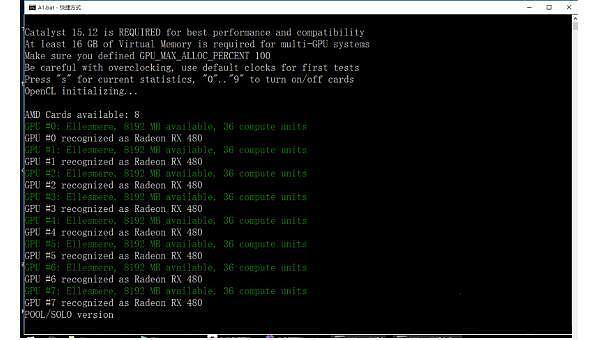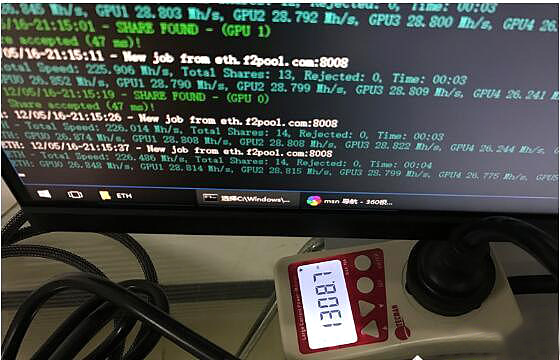ASIC Miner ICERIVER KAS KS0 Profitability In the realm of cryptocurrency mining, the Iceriver KAS KS0 miner has garnered widespread attention. Tailored specifically for the Kaspa network's KHeavyHash algorithm, it boasts high hashing power and low power consumption, making it an ideal choice for many miners. In this article, we will comprehensively assess IceRiver KS0 profitability while considering the Kaspa market conditions and the attributes of KS0 miner. Kaspa Market Dynamics Kaspa is a vibrant cryptocurrency network aimed at delivering high performance and scalability for everyday transactions. At the time of writing this article, the Kaspa coin trades at approximately $0.04959. But it's essential to note that cryptocurrency markets are highly susceptible to price volatility. Hence, investors must remain vigilant about market dynamics. Additionally, the Kaspa network's mining difficulty and reward mechanisms play a role in mining returns. Attributes of the IceRiver KS...
PandaMiner B1 Plus Miner Evaluation
The scale of the virtual currency mining industry is increasing day by day. Many individual miners purchase GPUs to assemble and mining by themselves, which requires a certain amount of technology and time. The Panda Miner team has gathered many professionals to form an all-around team and research and development within half a year with GP[U miners suitable for multiple virtual currencies; Panda Miner hopes to become the world's first brand of virtual currency hardware equipment.
This time we tested the PandaMiner B1 Plus miner.
The official parameters of PandaMiner B1 Plus are as follows:
Rated hash rate | ETH 230MHS±5% ZEC 1160 SHS (under ZEC 6.0 mining version) |
Wall power consumption | ETH 1380W+12%; ZEC 1100W+12% |
Power Efficiency | Great Wall 1600W power supply, 93% efficiency, 25"C ambient temperature |
Rated voltage | 12.4-12.6V |
Number of graphics cards | 8 pieces |
Dimensions | 503.5mm(L)*200mm(W)*92.5mm(H) |
Cooldown | 8*2 fans ( 8cm*8cm ) |
Operating temperature | 0°C to 40°C |
Working humidity | 5%RH-95%RH, non-condensing |
Internet connection | Ethernet |
Power connection | The four 6pin interfaces of each hash board need to be connected. It is recommended to use an independent power supply to power the whole miner. |
Miner packaging
The miners are packed in a five-layer special cardboard box. After unpacking, the miners inside are wrapped in a foam sleeve, which plays the role of moisture isolation and shock resistance, and avoids damage to the miners caused by logistics transportation.
There are also 4 6pin power extension cables in the box.
It can be seen from the picture that there are 8 fans on the miner's side. The picture shows 8 air inlet fans. There are also 8 air outlet fans on the miner's side.
On the other side of the miner are four 6pin power ports and an extended fan power port.
Miner connection
Open the miner panel and take a look at the internal structure of the miner. You can see that there are 4 graphics cards embedded on an extended motherboard and 16 fans on both sides. It is compact and compact, saves space, and ensures good heat dissipation.
Connect the extension cable and connect the power supply. The power supply we used in this test is the Antminer APW3 power supply. Connect the mouse, keyboard and monitor, turn on the power, and the fan will turn on at this time.
When turning on the miner, you should also press the power-on button on the miner. The power-on button should not be accidentally touched. It is designed to be challenging to press by hand. You need to find a sharp tool to assist in turning it on. All the indicators light up after pressing the power button, indicating that the miner is working usually.
The system installed on Panda Miner is Windows 10, wait for a while, and the system will automatically log in.
Run the test
Test tools:
·Infrared thermometer (to measure the temperature of miners when mining).
·Decibel meter (to measure the noise when miners are mining).
·Power tester (to measure the power consumption of miners when mining).
Let's take a look at the power at this time. The power when mining is not started is 612w.
After entering the system, open the mining software eth, zcash, and follow the mining steps.
Let's use GPU-Z to see the graphics card information. After GPU-Z is turned on, click the graphics card list in the lower-left corner, and you can see 8 Radeon(TM) RX 480 graphics cards, as well as a built-in graphics card intl HD Graphics.
Let's take a look at the configuration of this miner:
Windows10 64-bit, Enterprise Edition, Pentium, dual-core CPU 1.9GHz, 8G memory.
ETH mining test
Next, we will start testing mining. First, open the mining steps.txt on the desktop and take a look. The file contains the mining method of ETH, and the wallet address also needs to be modified.
After configuration, follow the instructions to double-click A1.bat to run mining.
The operating interface is shown in the figure above. The panda miner uses third-party mining software. You can see that 8 Radeon RX 480 graphics cards have been identified. It will wait for about 1 minute to initialize the mining software. Wait for a while; the software starts mining automatically.
We can see that the software receives the task from the mining pool, and the software submits the result to the mining pool. The total hash rate of the miners is around 225Mh/s, and the miners are running stably for a while. So let’s take a look at the power consumption of the miners at this time.
The miner's power is maintained at around 1308W, consistent with the official data.
After the miner has been running for 1 hour, let's test the temperature of the miner's air outlet: the maximum temperature of the air outlet is 44.5 degrees Celsius, and the miner's heat dissipation effect is perfect.
Let's measure the noise again. At a distance of about 1 meter from the miner, the test miner's noise is 71.7 decibels and 60 decibels 5 meters away.
After 12 hours of testing, the hash rate curve is as follows:
The average hash rate remains around 225Mh/s, the hash rate is still very stable, and the hash rate is consistent with the official data.
Summarize
Test results:
ETH average hash rate | 225 Mh/s |
Air outlet temperature during the mining operation | 44.5 C |
Noise within 1 m | 71.7 dB |
5m away noise | 60.2 dB |
Mining runtime power | 1308.7 W |
The overall test results are consistent with the official data, indicating that the pass rate of Panda miners is still reasonable, and the income can be very stable.
Panda Miner is the first to create a graphics card integrated miner, which solves the trouble of assembling miners and achieves low power consumption and high hash rate, making mining more accessible, more stable, and higher.
The content and pictures of this article are from the Internet, compiled and edited by ZEUS MINING.






Comments
Post a Comment
Tell us your opinion